Our Low FODMAP Pad See Ew is very close to the classic Thai stir-fried noodles, which are a favorite street food. Unlike Pad Thai, which is sweeter and sourer, Pad See Ew is more savory and focuses on salt and rich umami flavor. Here we combine wide rice noodles with a dark brown sauce based on oyster sauce and soy sauce, with the additions of Chinese broccoli (Gai lan), chicken and egg. It is a stir-fried dish and easy to make – and is gluten-free in addition to being low FODMAP.
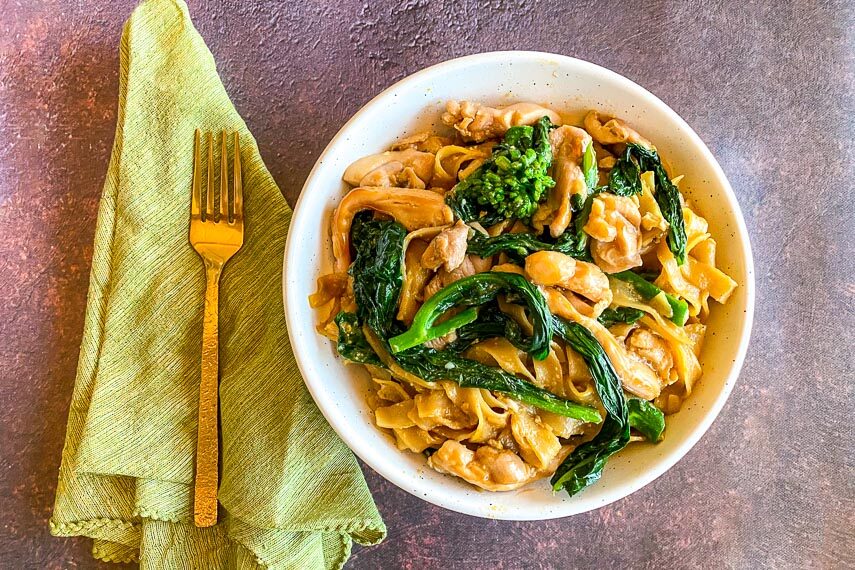
Asian Noodles & FODMAPs
We are huge noodle fans. A bowl of – almost anything! – entwined with pasta or Asian-style noodles makes for serious comfort food and we are here to tell you that you can enjoy many such dishes while following the low FODMAP diet.
This recipe uses broad Asian-style rice noodles. More below.
Frequently Asked Questions
The rough translation of “pad see ew” is “fried with soy sauce” and indeed they are! It is a popular street food in Thailand which combines rice noodles with some wort of protein – beef, pork or chicken and you can even use tofu for a plant-based protein. The sauce always contains soy sauce. Some cooks use oyster sauce in addition, as we do here. It adds depth, complexity and umami. Recipes usually also include vinegar and sugar. Chinese broccoli, gai lan, is the highlighted vegetable and an egg is scrambled in there, too. It is prepared with a stir-fry technique.
Gai lan is Chinese broccoli and it has a generous low FODMAP serving size of 75 g, which is about 1 cup chopped. It is very leafy, with prominent stems and very little flower, which makes it very different from regular broccoli. It also has a different taste – it is more bitter – which is partly what makes pad see ew what it is. There really is no substitute.
We do not recommend it. Not only will you miss out on the leafy aspects of gai lan, but the flavor is also not the same at all. See Q&A above.
This recipe was developed with oyster sauce as a key ingredient, so for this low FODMAP Pad See Ew the answer is yes. We use Panda Green Label Oyster Sauce, which is gluten-free and low FODMAP.
Many traditional recipes for Pad See Ew call for both light and dark soy sauce, which not everyone has easy access to. I use one kind of soy sauce and please note that I suggest low-sodium and naturally brewed. This dish is salty as it is, and in my opinion needs the low sodium to work – and it must be a naturally brewed soy sauce as well. There are lesser soy sauces that are very harsh and chemically produced. The latter are the type often found in US supermarkets and we do not recommend them for any dish, but especially this one, which counts on a well-flavored, savory high quality soy sauce. Try San-J brand.
This is a great question! If you have access to fresh noodles, such as sen yai, then you could tweak the recipe and use them. If you do buy them, keep them at room temperature and use ASAP. They become hard and unmanageable if refrigerated. Because most folks will not have access to sen yai, I chose to use easier-to-find and/or mail-order dried rice noodles. Get the ones labeled XL as seen below. They still will not be as wide as fresh, but they are a great substitute.
You will be cooking your rice noodles in water first. Cook them until they are still al dente and a bit firm. They cook again in the sauce in your wok, so if they are cooked through initially, they will overcook and fall apart once they get to the wok. Undercook a bit initially!
Pad See Ew usually contains a fair amount of fresh garlic, which of course is high FODMAP. We get garlic flavor into the recipe in two ways: 1) With FreeFod Garlic Replacer -and there is no replacement for this dish, and 2) with Low FODMAP Garlic-Infused Oil, made with vegetable oil. Please do not the kind in olive oil. We make our own but if you want to purchase, we like Tourangelle.
We like the moist texture and meaty flavor of chicken thighs. If you would like to use skinless, boneless chicken breast, you can. Take care not to overcook.
Pad See Ew is a classic stir-fried dish, and a wok, with its classic bowl-like shape, provides the kind of heat and contact between food and pan that provides best results. We like carbon steel woks but recently we have been using a cast-iron wok. It holds heat exceptionally well and cleans easily.
If you do not have a wok, just make sure you use a very heavy pan, with great heat conductivity, and make sure it is large enough and with high enough sides to hold all of the ingredients and toss everything around.
How To Make Low FODMAP Pad See Ew
After you have cooked the noodles in a large pot everything comes to together in one pan – a wok!
For the Noodles & Sauce: Cook the noodles according to package directions until on the firm side of al dente. Drain and run cold water over them in the colander; leave in sink. For the sauce, in a small non-reactive bowl whisk together the soy sauce, water, oyster sauce, vinegar, sugar and FreeFod Garlic Replacer until sugar dissolves.
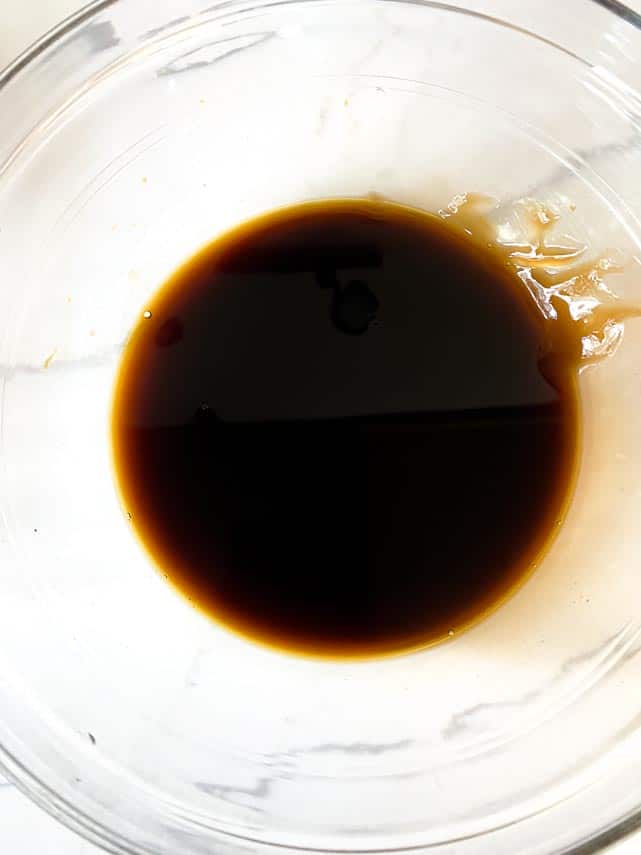
Cut chicken into large bite-sized pieces.
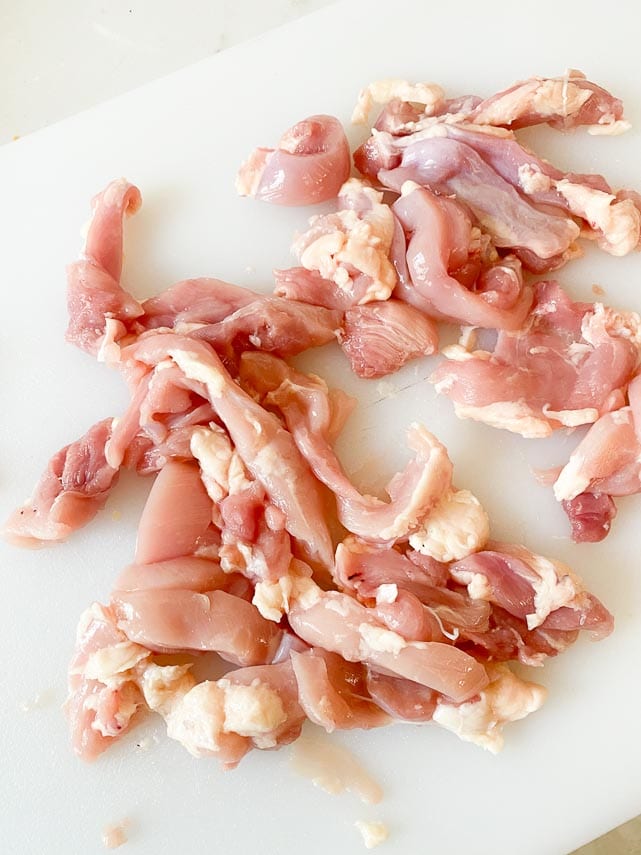
Place chicken pieces in a non-reactive bowl and toss with 2 tablespoons of the marinade. Set aside while you prep broccoli and begin to cook.
For the Chinese Broccoli Prep: Separate the leaves from the mid-length stems (the thick woody stems from the bottom will have already been discarded).
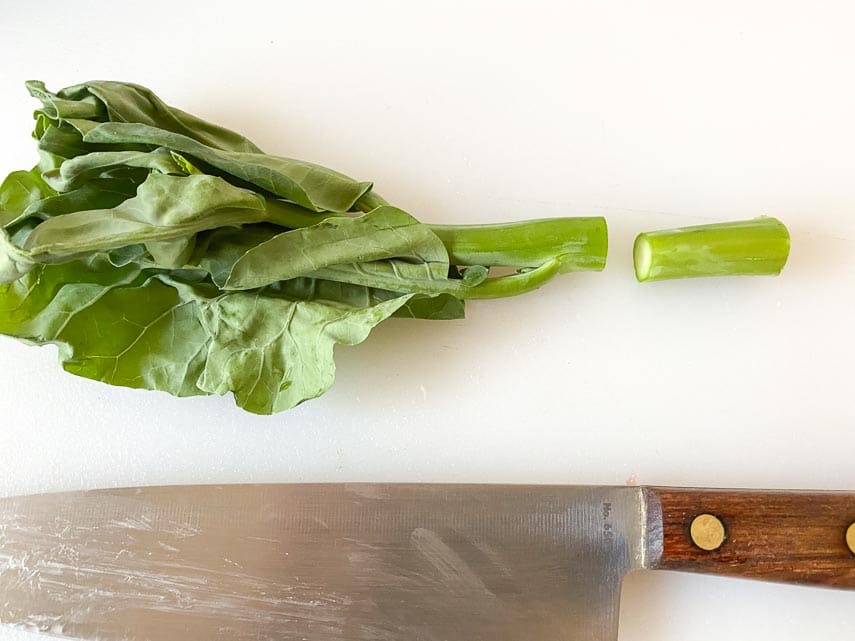
Now separate the leaves from the more tender stems.
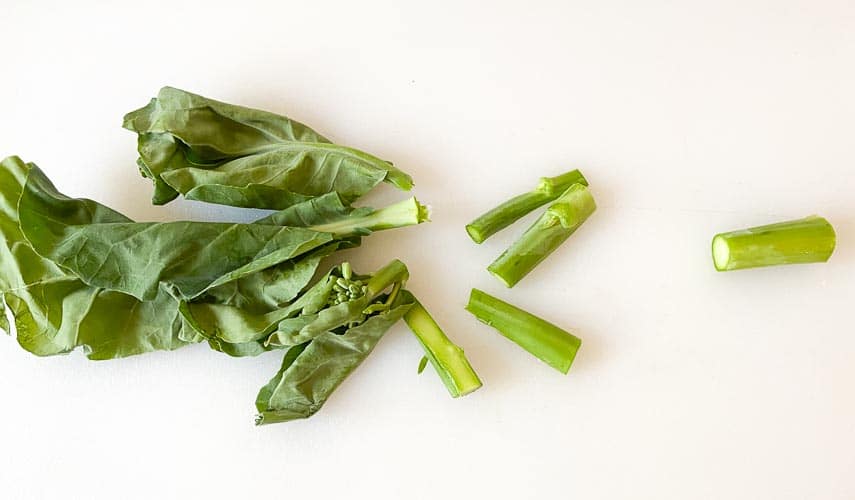
Cut the stems vertically in half thirds to create pieces less than ½-inch (12 mm) thick and a 2 to 3-inches (5 cm to 7.5 cm) long.
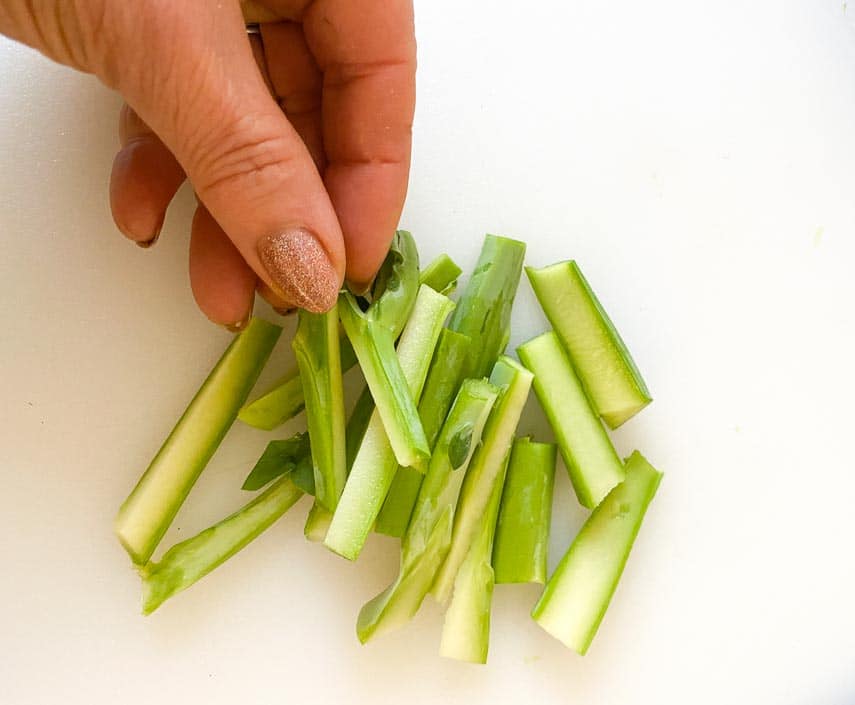
Finish the Stir-Fry: Heat the wok over high heat, then swirl in 2 tablespoons of oil to coat bottom and sides. Add the chicken along with any marinade it was combined with and stir fry until chicken is about halfway cooked through.
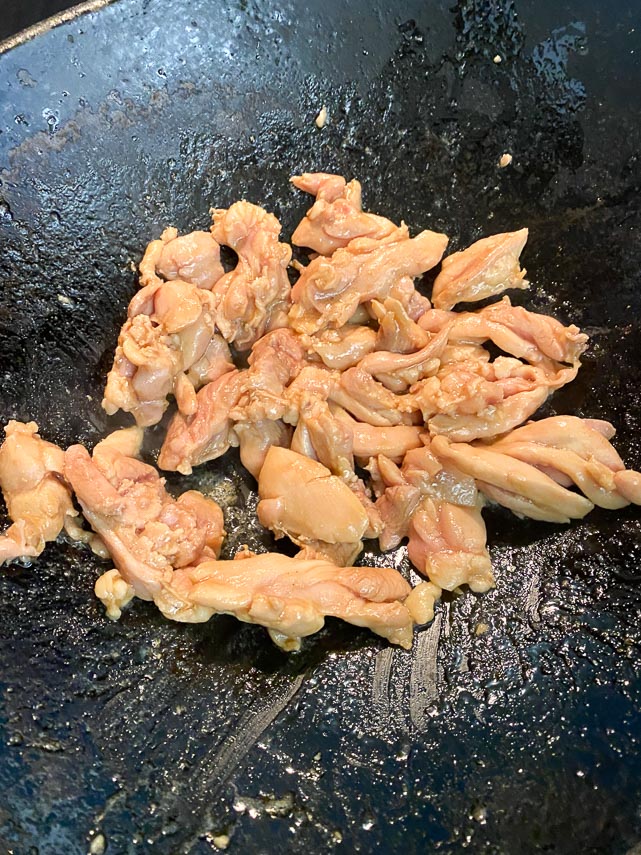
Add the Chinese broccoli stems and continue to stir fry until they are cooked about halfway through. Add the Chinese broccoli leaves and continue to stir fry until chicken is cooked through and Chinese broccoli stems are crisp tender and leaves are wilted. Push everything to one side of the wok, pour the beaten egg onto the open area of the wok and scramble the egg well. Combine everything in the wok, then remove to a warm plate or bowl. Wipe out the wok.
Return wok to stove over high heat and add remaining 3 tablespoons of oil. Add noodles and sauce and toss quickly but gently.
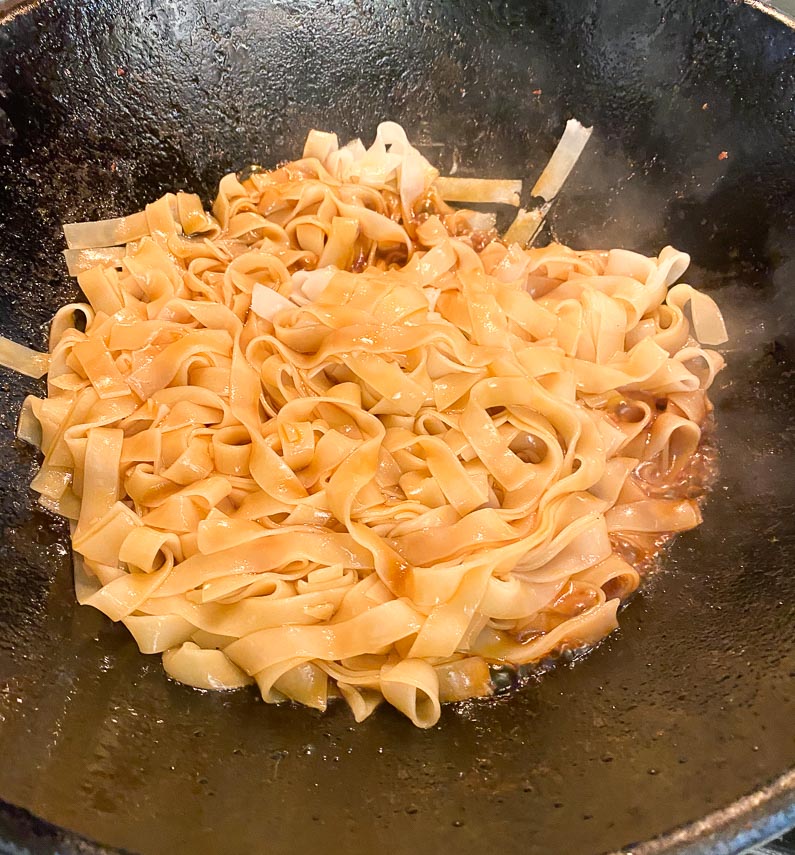
You want to coat the noodles very well, keep them from breaking, heat them through and allow them to get a bit caramelized by the high heat and the sugar in the marinade. Toss in the reserved chicken and Chinese broccoli and cook just until heated through and serve immediately.
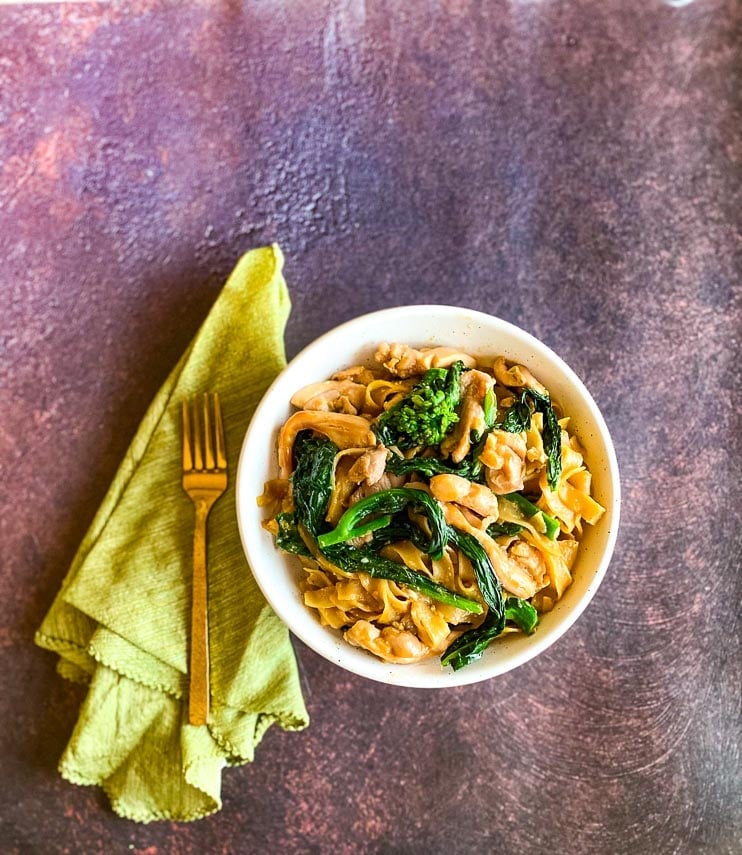
If you like Asian-style dishes, make sure to check out our Low FODMAP Hot and Sour Shrimp Lo Mein, Low FODMAP Asian Tofu Noodle Papaya Salad, Low FODMAP Asian Steak & Noodle Salad with Mint & Peanuts, Noodles with Shrimp & Broccoli, Dumplings, and our Garlicky Peanut Sauce, which we think goes wonderfully with just about anything.
FODMAP Information
Our recipes are based on Monash University and FODMAP Friendly science.
- Chinese Broccoli: Also called Gai Lan. Lab tested by Monash with a low FODMAP serving size of 75 g, which is about 1 cup chopped. Becomes Moderate for fructans at 286 g.
- Eggs: Eggs are high in protein and do not contain carbohydrates, according to Monash University.
- Garlic-Infused Oil: Make your own Garlic-Infused Oil or buy a commercial equivalent for the easiest way to add garlic flavor to your food. Fructans in garlic are not oil-soluble, so garlic-infused oil is low FODMAP.
- Oil: All pure oils are fats and contain no carbohydrates, therefore they contain no FODMAPs.
- Pasta: You have to read labels, but there are many low FODMAP gluten-free brands of pasta available. Use what is called for in individual recipes. Our go-to is rice-based pasta. Monash University and FODMAP Friendly have both tested “gluten-free” pasta, but they do not specify what the pasta was made from. Monash says gluten-free pasta is low FODMAP at 145 g or 1 cup cooked; FODMAP Friendly lab testing suggested 2 cups or 146 g cooked is low FODMAP. Monash has also lab tested pasta made from rice, which they list under “rice stick” and it is low FODMAP at 220 g, which no Moderate or High FODMAP amounts given.
- Sugar: Monash University and FODMAP Friendly have both lab tested white, granulated sugar. Monash states that a Green Light low FODMAP serving size of white sugar is ¼ cup (50 g). FODMAP Friendly simply states that they have tested 1 tablespoon and that it is low FODMAP. Regular granulated white sugar is sucrose, which is a disaccharide made up of equal parts glucose and fructose. Sucrose is broken down and absorbed efficiently in the small intestine.
- Vinegar: Several vinegars have been lab tested by both Monash and FODMAP Friendly. From Monash: Apple cider vinegar is low FODMAP at 2 Australian tablespoons or 42 g; Balsamic vinegar is low FODMAP at 1 Australian tablespoons or 21 g; Malt vinegar contains no FODMAPs; Rice wine vinegar is low FODMAP at 2 Australian tablespoons or 42 g. From FODMAP Friendly: Balsamic gets a “Pass” at 2.5 tablespoons or 42 ml. Apple cider vinegar gets a “Pass” at 1 tablespoon or 14 g (don’t ask me why one is in milliliters and the other in grams).
Please always refer to the Monash University & FODMAP Friendly smartphone apps for the most up-to-date lab tested information. As always, your tolerance is what counts; please eat accordingly. The ultimate goal of the low FODMAP diet is to eat as broadly as possible, without triggering symptoms, for the healthiest microbiome.
For more noodle and pasta inspiration, be sure to check out our article: Noodles, Noodles, Noodles: 30 Gut-Friendly Pasta Recipes – Low FODMAP & Gluten Free!
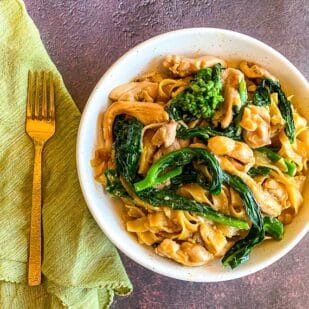
Low FODMAP Pad See Ew
Our Low FODMAP Pad See Ew is very close to the classic Thai stir-fried noodles, which are a favorite street food. Unlike Pad Thai, which is sweeter and sourer, Pad See Ew is more savory and focuses on salt and rich umami flavor. Here we combine wide rice noodles with a dark brown sauce based on oyster sauce and soy sauce, with the additions of Chinese broccoli (Gai lan), chicken and egg. It is a stir-fried dish and easy to make – and is gluten-free in addition to being low FODMAP.
Ingredients:
Noodles, Sauce & Chicken:
- 12- ounces (340 g) extra-wide Asian-style rice noodles
- ¼ cup (60 ml) plus 3 tablespoons gluten-free, low sodium naturally brewed soy sauce, such as San-J
- ¼ cup (60 ml) plus 1 tablespoon water
- ¼ cup (60 ml) low FODMAP, gluten-free oyster sauce, such as green label Panda brand
- 1 tablespoon plus 1 teaspoon teaspoon rice wine or apple cider vinegar
- 1 tablespoon plus 1 teaspoon sugar
- 1 ½ teaspoons FreeFod Garlic Replacer
- 12- ounces (340 g) boneless, skinless chicken thighs, cut into large bite-sized pieces
Chinese Broccoli & Egg:
- 12- ounces (340 g) Chinese broccoli, woody bottom stems trimmed away and discarded
- 5 tablespoons Low FODMAP Garlic-Infused Oil, made with vegetable oil, divided
- 2 large eggs, at room temperature, beaten well
Preparation:
-
For the Noodles & Sauce: Cook the noodles according to package directions until on the firm side of al dente. Drain and run cold water over them in the colander; leave in sink. For the sauce, in a small non-reactive bowl whisk together the soy sauce, water, oyster sauce, vinegar, sugar and FreeFod Garlic Replacer until sugar dissolves. Place chicken pieces in a non-reactive bowl and toss with 2 tablespoons of the marinade. Set aside while you prep broccoli and begin to cook.
-
For the Chinese Broccoli Prep: Separate the leaves from the mid-length stems (the thick woody stems from the bottom will have already been discarded). Cut the stems vertically in half thirds to create pieces less than ½-inch (12 mm) thick and a 2 to 3-inches (5 cm to 7.5 cm) long.
-
Finish the Stir-Fry: Heat the wok over high heat, then swirl in 2 tablespoons of oil to coat bottom and sides. Add the chicken along with any marinade it was combined with and stir fry until chicken is about halfway cooked through. Add the Chinese broccoli stems and continue to stir fry until they are cooked about halfway through. Add the Chinese broccoli leaves and continue to stir fry until chicken is cooked through and Chinese broccoli stems are crisp tender and leaves are wilted. Push everything to one side of the wok, pour the beaten egg onto the open area of the wok and scramble the egg well. Combine everything in the wok, then remove to a warm plate or bowl. Wipe out the wok.
-
Return wok to stove over high heat and add remaining 3 tablespoons of oil. Add noodles and sauce and toss quickly but gently. You want to coat the noodles very well, keep them from breaking, heat them through and allow them to get a bit caramelized by the high heat and the sugar in the marinade. Toss in the reserved chicken and Chinese broccoli and cook just until heated through and serve immediately.
Notes:
FODMAP Information
Our recipes are based on Monash University and FODMAP Friendly science.
• Chinese Broccoli: Also called Gai Lan. Lab tested by Monash with a low FODMAP serving size of 75 g, which is about 1 cup chopped. Becomes Moderate for fructans at 286 g.
• Eggs: Eggs are high in protein and do not contain carbohydrates, according to Monash University.
• Garlic-Infused Oil: Make your own Garlic-Infused Oil or buy a commercial equivalent for the easiest way to add garlic flavor to your food. Fructans in garlic are not oil-soluble, so garlic-infused oil is low FODMAP.
• Oil: All pure oils are fats and contain no carbohydrates, therefore they contain no FODMAPs.
• Pasta: You have to read labels, but there are many low FODMAP gluten-free brands of pasta available. Use what is called for in individual recipes. Our go-to is rice-based pasta. Monash University and FODMAP Friendly have both tested “gluten-free” pasta, but they do not specify what the pasta was made from. Monash says gluten-free pasta is low FODMAP at 145 g or 1 cup cooked; FODMAP Friendly lab testing suggested 2 cups or 146 g cooked is low FODMAP. Monash has also lab tested pasta made from rice, which they list under “rice stick” and it is low FODMAP at 220 g, which no Moderate or High FODMAP amounts given.
• Sugar: Monash University and FODMAP Friendly have both lab tested white, granulated sugar. Monash states that a Green Light low FODMAP serving size of white sugar is ¼ cup (50 g). FODMAP Friendly simply states that they have tested 1 tablespoon and that it is low FODMAP. Regular granulated white sugar is sucrose, which is a disaccharide made up of equal parts glucose and fructose. Sucrose is broken down and absorbed efficiently in the small intestine.
• Vinegar: Several vinegars have been lab tested by both Monash and FODMAP Friendly. From Monash: Apple cider vinegar is low FODMAP at 2 Australian tablespoons or 42 g; Balsamic vinegar is low FODMAP at 1 Australian tablespoons or 21 g; Malt vinegar contains no FODMAPs; Rice wine vinegar is low FODMAP at 2 Australian tablespoons or 42 g. From FODMAP Friendly: Balsamic gets a “Pass” at 2.5 tablespoons or 42 ml. Apple cider vinegar gets a “Pass” at 1 tablespoon or 14 g (don’t ask me why one is in milliliters and the other in grams).
Please always refer to the Monash University & FODMAP Friendly smartphone apps for the most up-to-date lab tested information. As always, your tolerance is what counts; please eat accordingly. The ultimate goal of the low FODMAP diet is to eat as broadly as possible, without triggering symptoms, for the healthiest microbiome.
Nutrition
All nutritional information is based on third-party calculations and should be considered estimates. Actual nutritional content will vary with brands used, measuring methods, portion sizes and more. For a more detailed explanation, please read our article Understanding The Nutrition Panel Within Our Recipes.

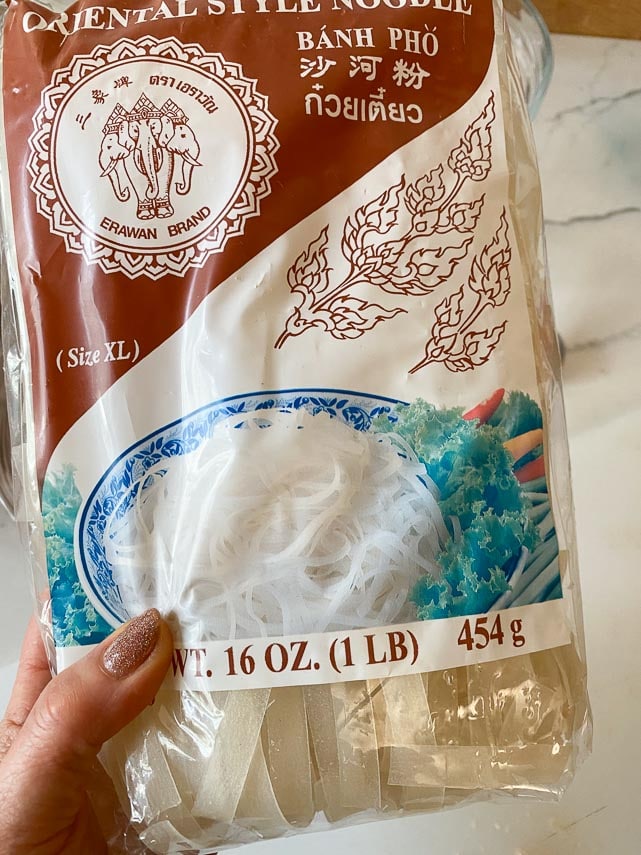
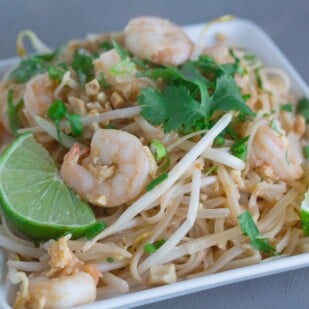
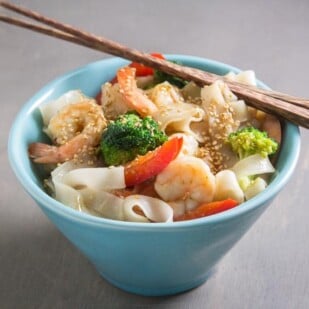
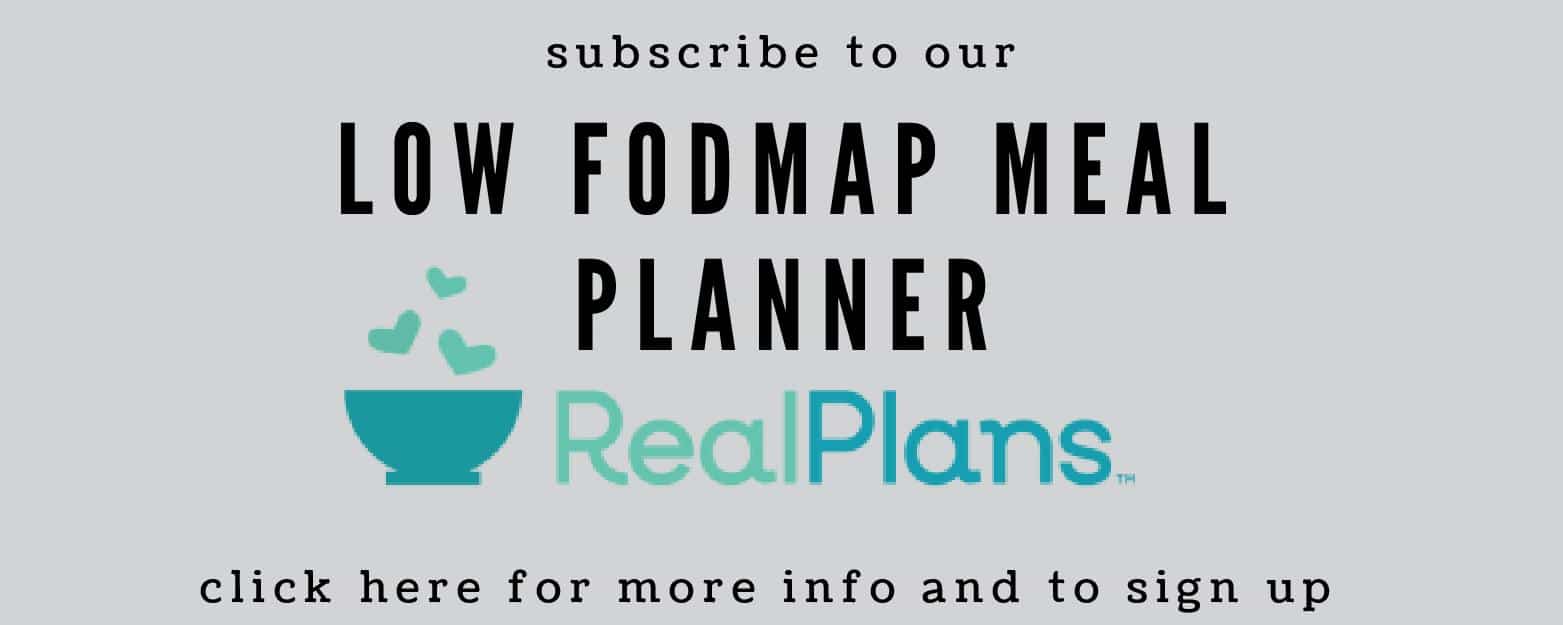



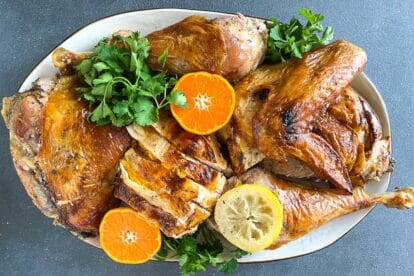
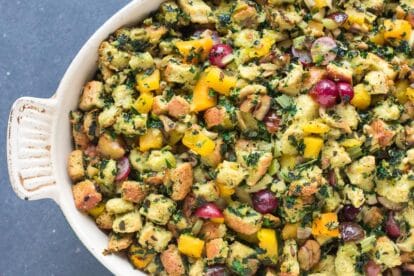
Hi, this looks like a great recipe for Pad See Ew however you have not provided the qualities for each ingredient you have only said the method? Can you please provide the quantities?
A glitch in the system! All there now:)
This recipe looks great, but please remember that soy sauce is not necessarily gluten-free. People following a gluten-free diet need to use tamari, liquid aminos, or a specifically gluten-free soy sauce.
The recipe does already specify gluten-free soy sauce as well as low sodium. They are integral to the dish on the whole. I do not recommend the dish with liquid aminos.
Hi Dédé-FreeFod Garlic Replacer is listed as one of the ingredients for the Noodles, Sauce & Chicken. I did not see it used in any of the steps. I added it in the last step as I didn’t notice it earlier. 🙂
Thank you for pointing out the omission. It is listed correctly in the Ingredients – it gets whisked into the marinade so that is dissolves and disperses well. Recipe has been corrected.
I used 1/2 teaspoon of Gourmend garlic chive powder in place of the other faux garlic since that’s what I have. I also used regular broccoli since I couldn’t find Chinese broccoli but I microwaved it for 2 minutes 1st. It was a good recipe but too salty even w/ low sodium soy sauce.
Hi there Julie. The Chinese broccoli has a bitter flavor and is quite different from regular broccoli. The way the recipe is developed would taste quite different from what you made. Also, microwaving the broccoli first creates a milder taste, again, which then works with the other flavors in a different way than the original recipe. In addition, if you use chemically brewed soy sauce, even if it is low sodium, it has a much (MUCH) harsher, salty flavor. With the San J products this works quite well. The garlic product I recommended has a much different flavor than the Gourmend you used…again, your dish was not going to taste like what we created. Many people don’t realize that any change to a recipe will alter FODMAP load that you then have to re-calculate (broccoli and Chinese broccoli are not the same) and the flavors and textures and even the yields can change.
Thanks, Dede
I literally cannot eat certain soy sauces, they are so harsh, salty and unappetizing. Huge difference.
This really satisfied my pad see yew cravings while being so nutritious and gut friendly! I replaced the sugar with stevia and couldn’t tell the difference!